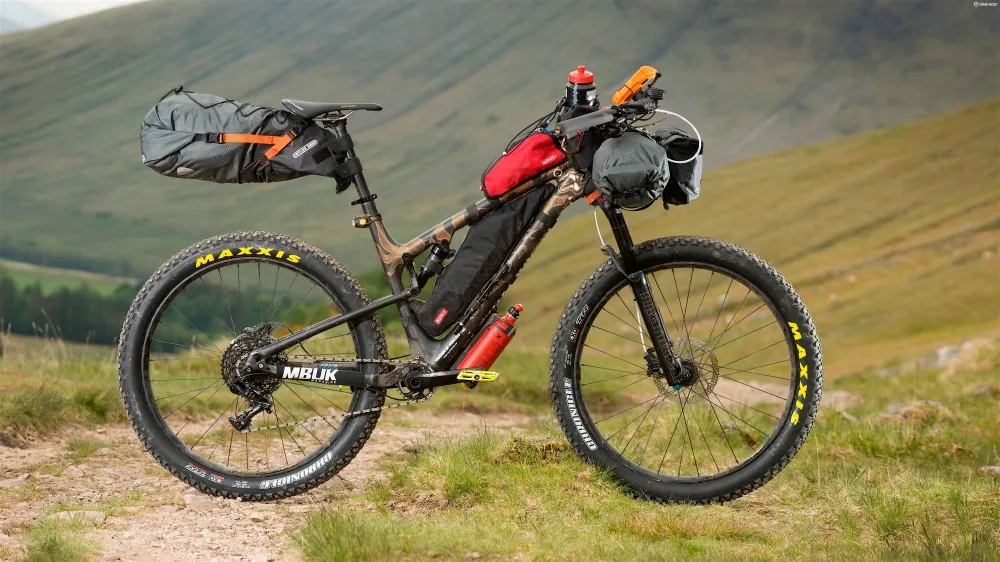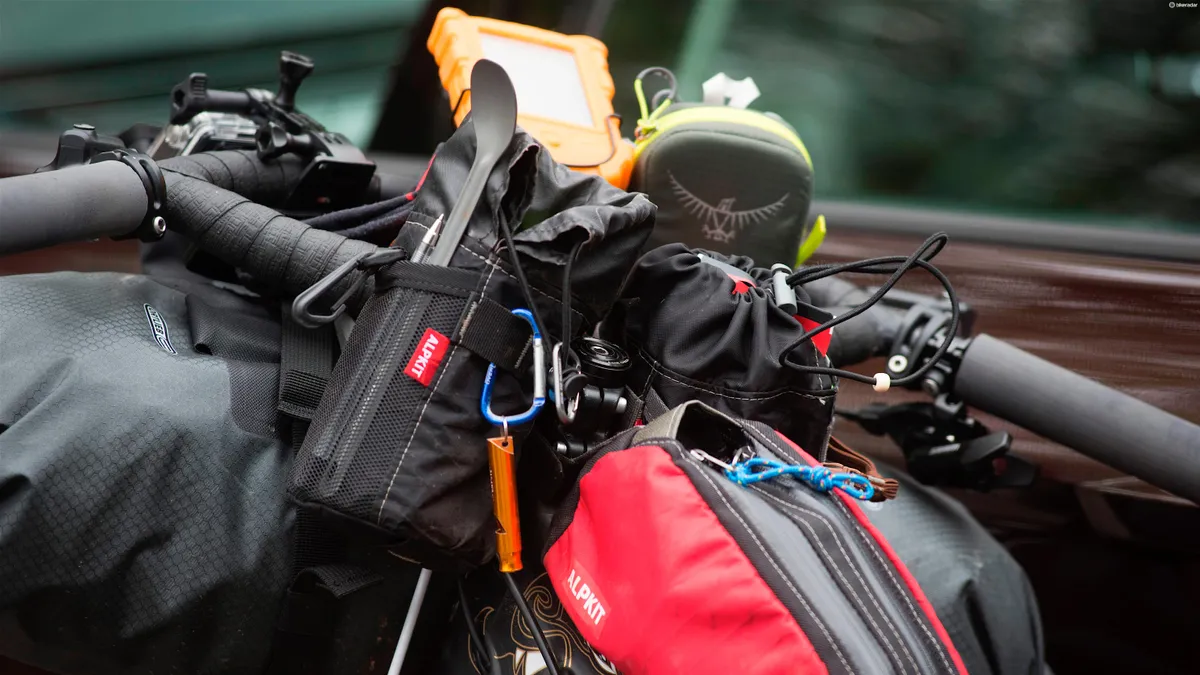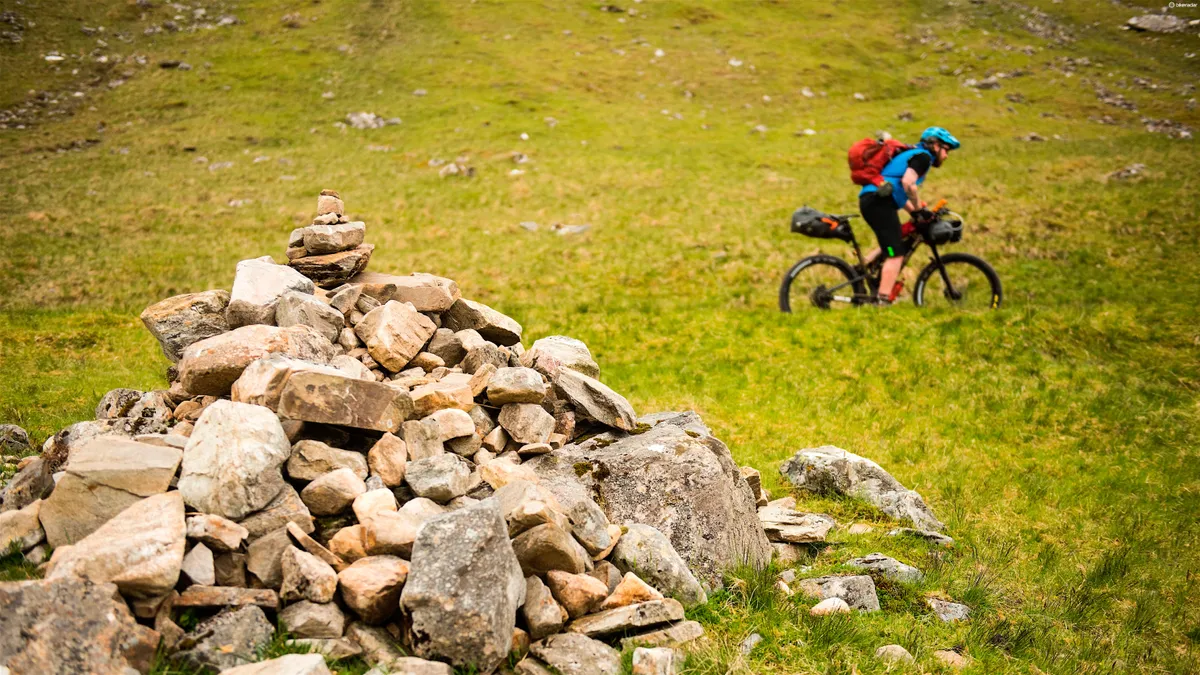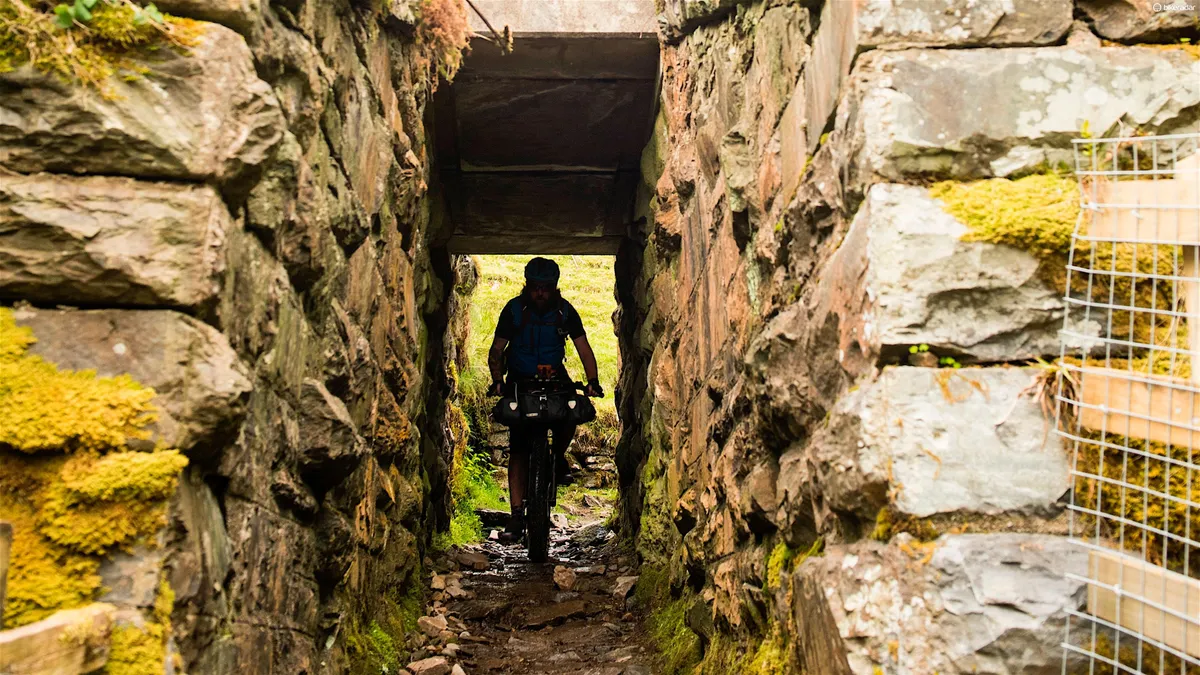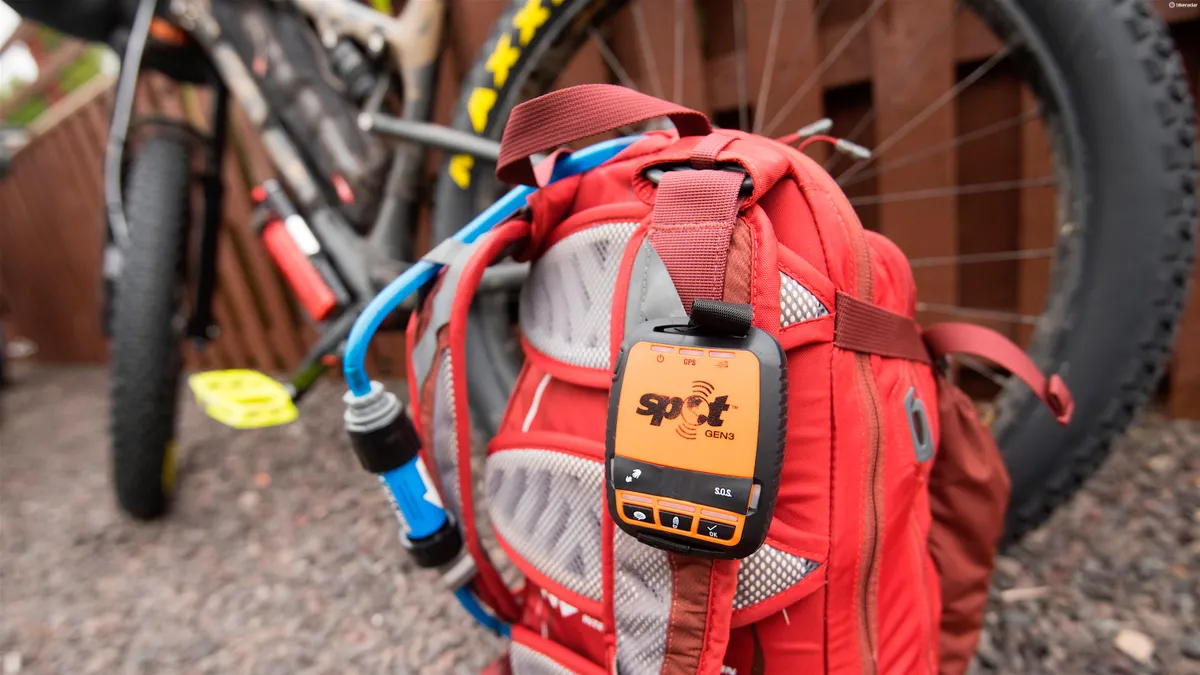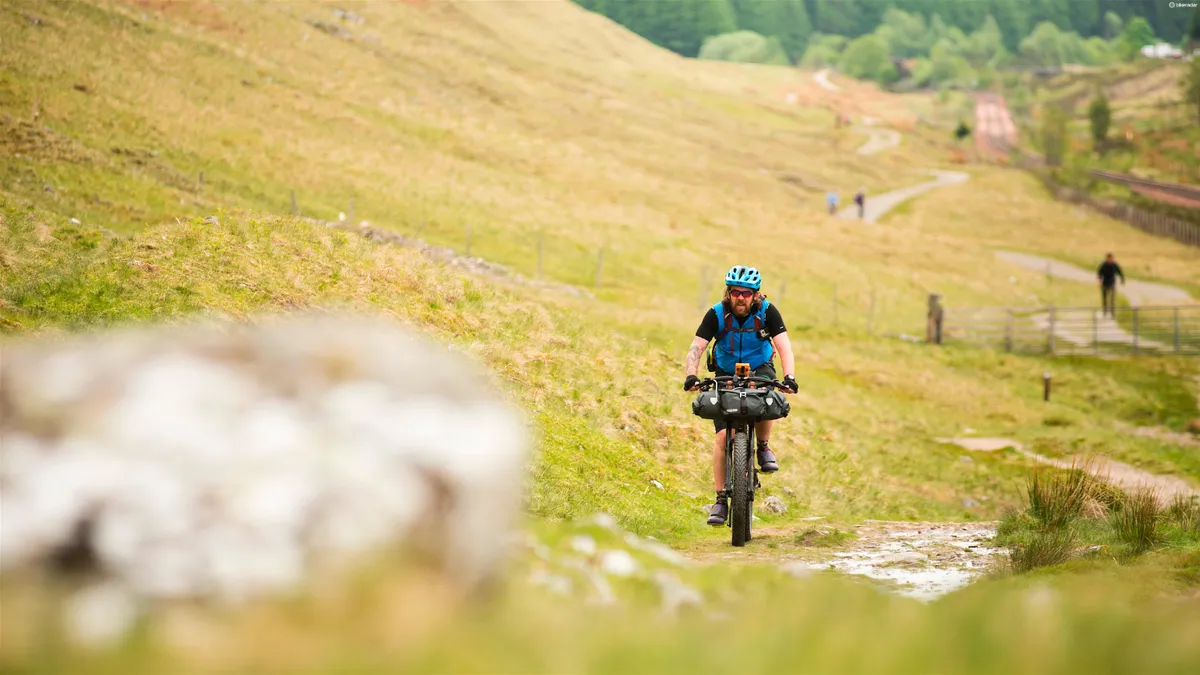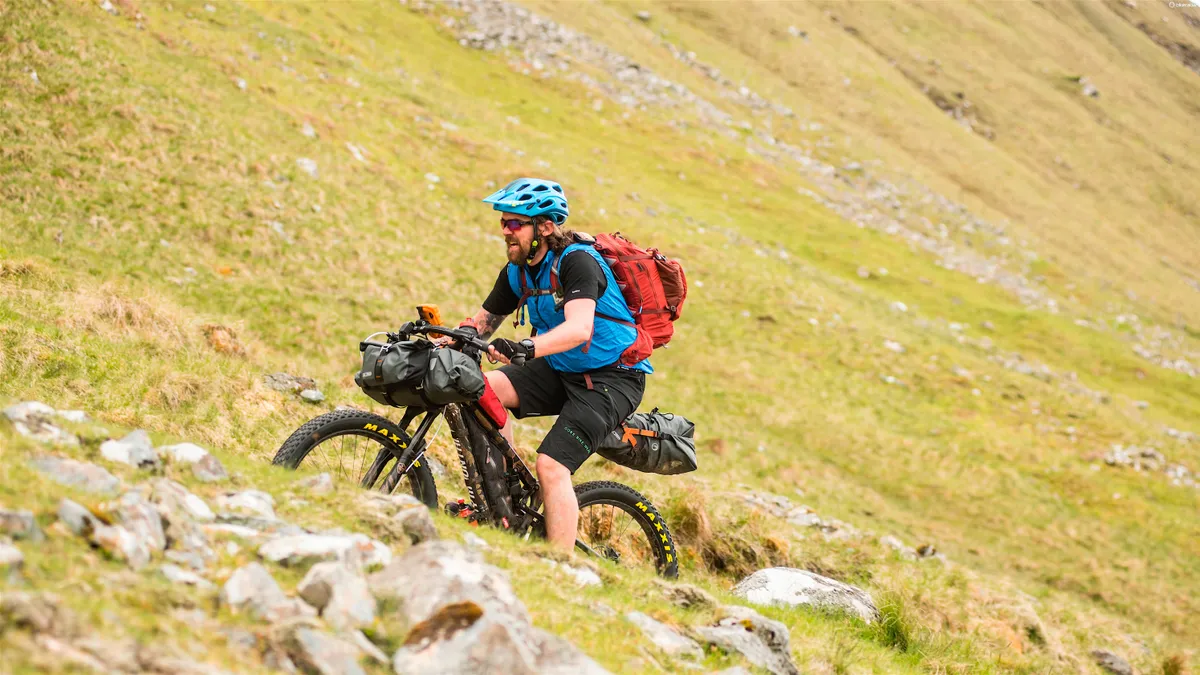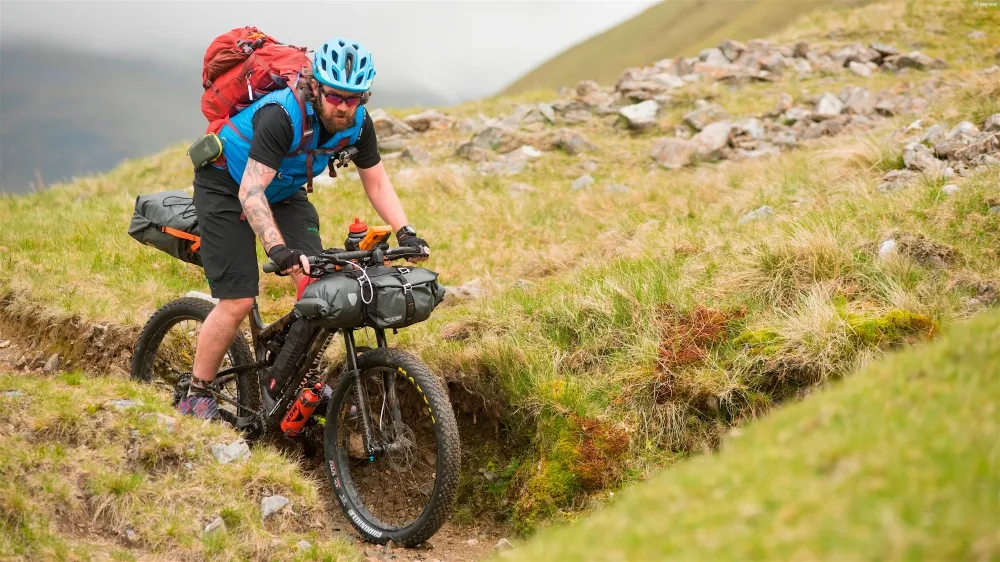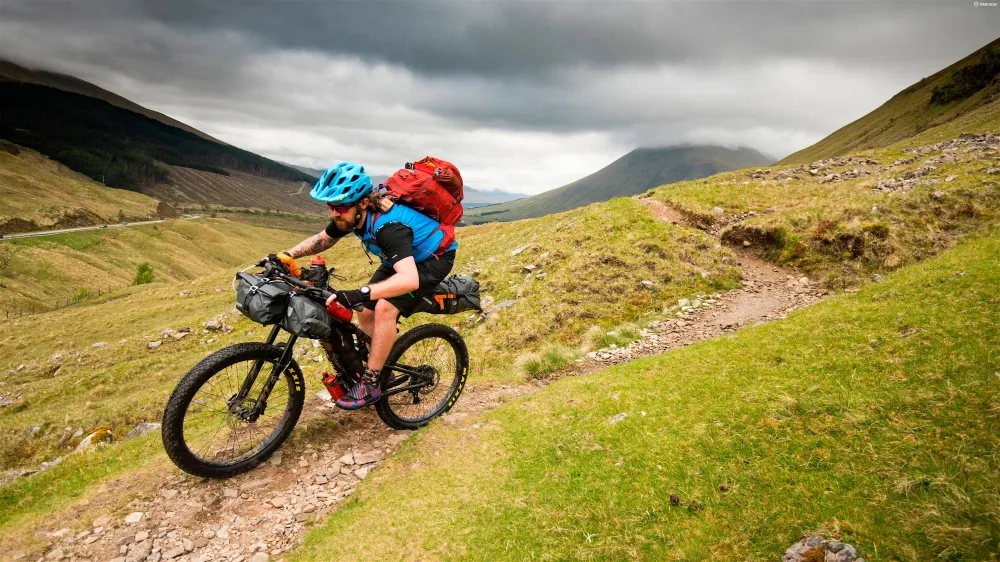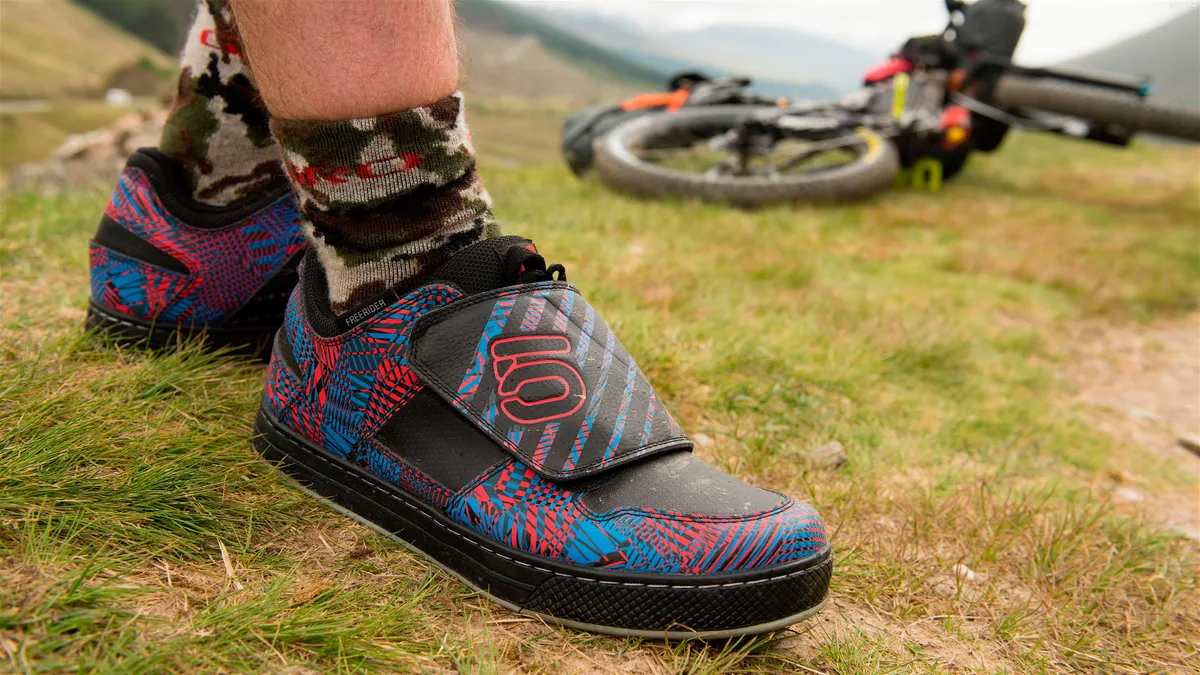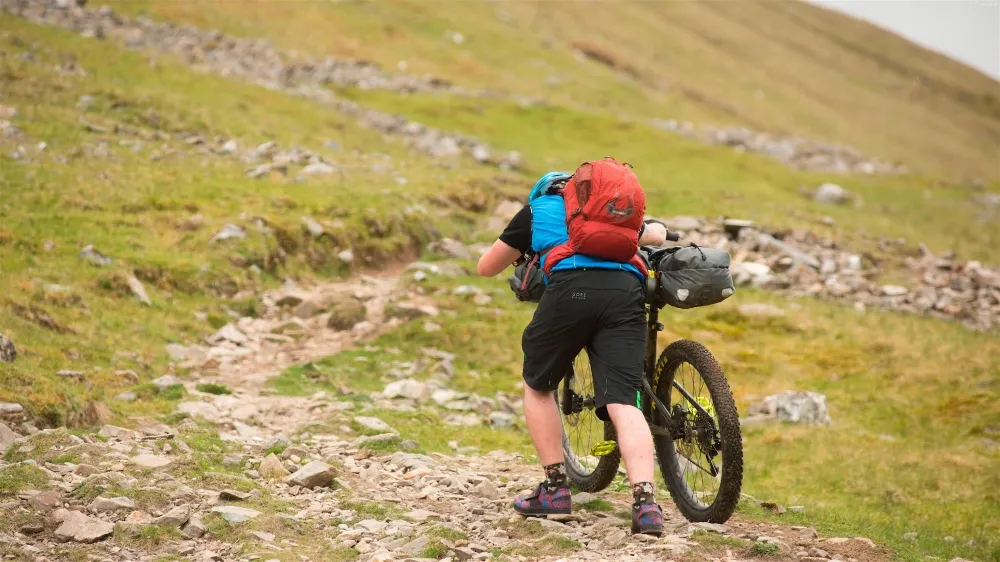The scale of my upcoming adventure hits me as I sit in my car on the motorway in sweltering heat doing precisely zero miles per hour. The sat-nav has put the distance from Bristol to Tyndrum at 428.8 miles. That’s some 121.2 miles shorter than the ride I’m about to attempt, unsupported and mostly off-road. And I’ve never ridden in the Scottish mountains or racked up more than 130 miles in the saddle before.
- Ortlieb Handlebar and Accessory Pack review
- Horse for the Course: Specialized CruX for the Dirty Kanza 200
You may not have heard of my destination, but Tyndrum will be familiar if you’ve made the pilgrimage from England or Wales to the Fort William World Cup. This small village is home to The Green Welly Stop, a favourite stopping-off point on the long drive north.
A small car park behind the cafe and gift shop is the inauspicious spot for the grand départ of this year’s Highland Trail 550. Early the next morning I join 45 riders from seven countries who’ve gathered here, after coffee and last-minute fry-ups, to tackle the toughest mountain bike route in the UK.
Inspired by epic US rides such as the Tour Divide and Colorado Trail Race, the 550 follows the same concept of self-supported adventure. There’s no entry fee and no prize money. Should things go wrong you’re on your own. You can’t stash supplies along the way and there’s strictly no pre-booking of accommodation.
The group start in June is invite-only, but the challenge itself is open all year to any rider and isn’t treated as a race but more of a gentleman’s agreement to complete the course and abide by the rules.
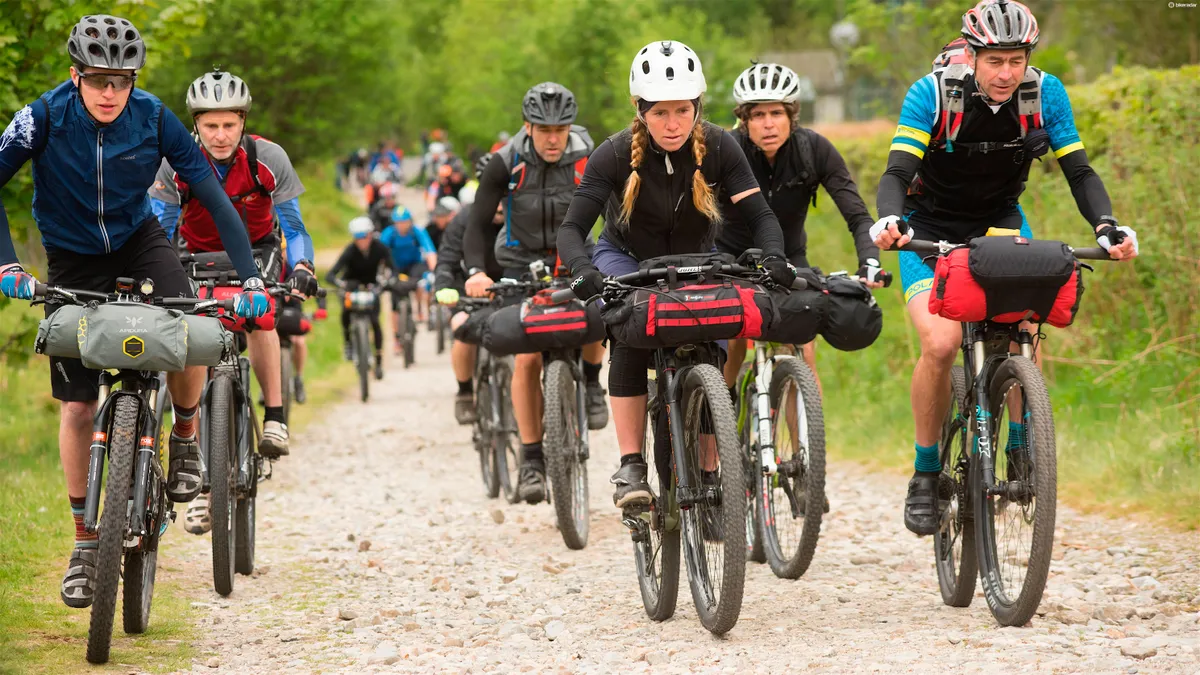
With little in the way of ceremony we’re off, much to the bemusement of walkers setting off on the West Highland Way. The sight of mountain bikes fully laden with camping gear and supplies is still relatively rare in the UK, and explanations of our endeavour and kit will become a staple of our days in the saddle. We soon become spread out.
I’ve backpacked through many National Parks and the Alps, and the extra distance I’m managing to cover by bike is striking. Before long, I’ve ridden through open moorland, along lochside trails, through small hamlets and lush forests, and onto a large open plain surrounded by distant mountains — a view that wouldn’t look out of place in Mongolia.
Be prepared
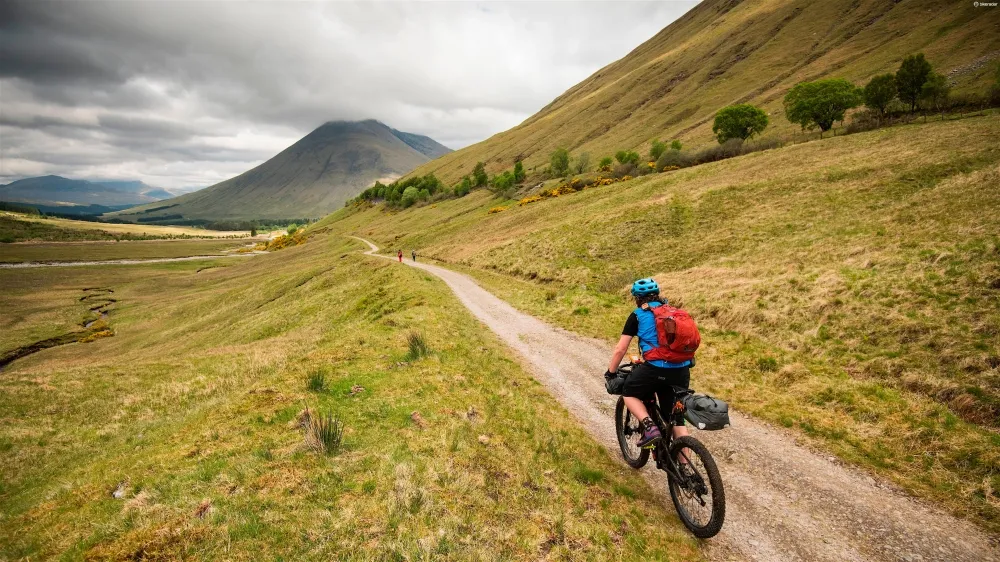
I trained hard for this event during the wet and cold winter, riding 150 miles a week and making multi-day trips to Wales and Dartmoor. But it’s hard to prepare for an ultra endurance event when you have the burdens of work and relationships. The faster riders will be covering 130 miles or more each day, riding for around 16 hours. As for me, I think 100 miles of off-road riding per day is a respectable goal, albeit one that’ll be tough to sustain for five days or more.
The heft of my bike and gear is also making it difficult to jump or manual through the many water bars crossing the trail
Last year, riders battled sleet, snow and plenty of rain, and I feel well prepared for these conditions, having slept out in sub-zero temperatures and had to shake ice from my tent in the mornings. Instead, an unseasonal spell of hot weather sees temperatures rise to the mid 20ºCs. I’m not a hot weather guy and by mid afternoon I’m taking shelter beneath a footbridge like an overheated troll, trying to bring down my temperature with a combination of river water and cool rocks. The midges have developed a taste for English blood and I haven’t seen another person for hours.
Thankfully the trail is straightforward to follow and I soon reach some sweeping fireroad descents that help me rack up some mileage. As the sun drops lower and the temperature became more manageable I set myself the goal of reaching Ben Alder Cottage on the shore of Loch Ericht, which lives up to its reputation as one of the most beautiful bothies in the country.
More weather
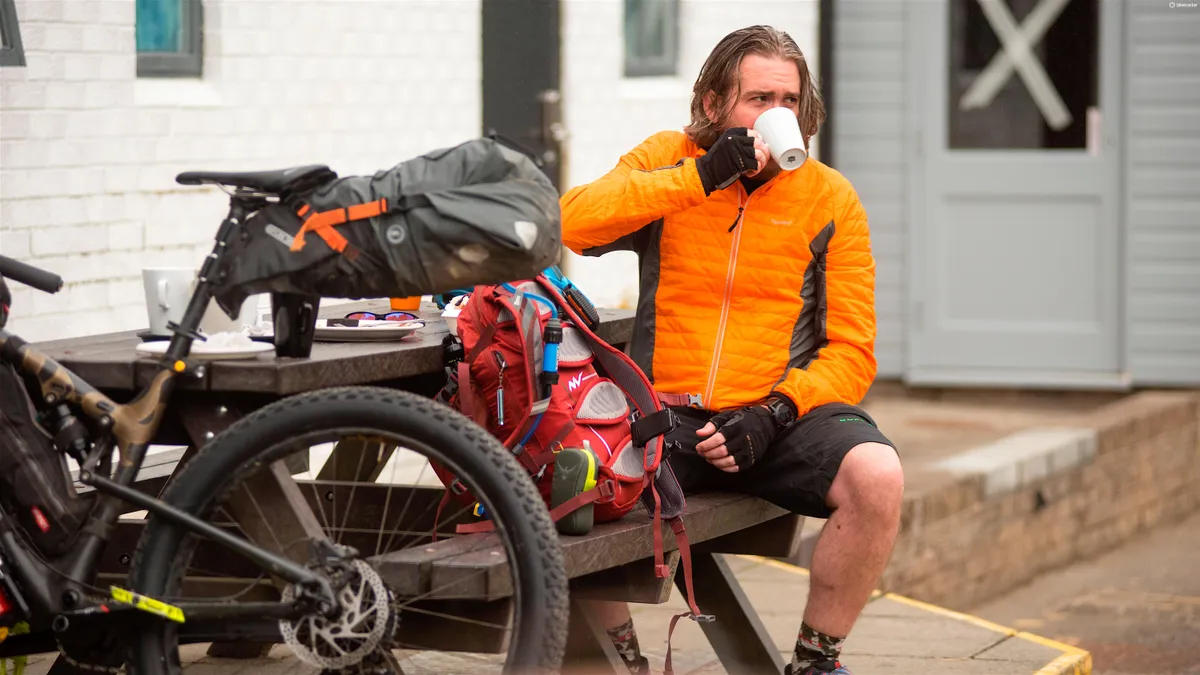
When I pack up my sleeping gear the morning is already warm and I realise I’m in for more of the same as yesterday. The trail up and around Ben Alder proves frustrating. My flabby kit list would have seen me through bad weather but now it’s just weighing me down, making for slow progress. The heft of my bike and gear is also making it difficult to jump or manual through the many water bars crossing the trail.
A swift descent into town for a full Scottish breakfast signals the start of day three, and the cycle of ride, eat, sleep, repeat resumes
The rear rim takes the brunt of quite a few failed attempts and before long there are signs of leaking sealant and plenty of sizeable dings. Thankfully the combination of WTB Scraper rim, Maxxis Chronicle tyre and a liberal dose of Stan’s NoTubes’ new Race Sealant holds and with a little extra air added I carry on.
As the first sign of civilisation for a good day-and-a-half, the cafe at Laggan Wolftrax trail centre seems like a great place to stop for a well-earned brew and slice of cake or three. My decision proves well timed, because the sky darkens and some truly Scottish rain comes in. As the other mountain bikers head for their cars and the cafe winds up to close, all that’s left to do is get pedalling.
The rain offers some relief from the heat and I find progress easier. My GPS unit suggests I’ll hit the town of Fort Augustus too late to find food so I decide to instead head for a bothy recommended by some walkers. The Blackburn of Corrieyairack shelter is empty so I settle in with some sizeable spiders for some much-needed sleep.
I’ll be back
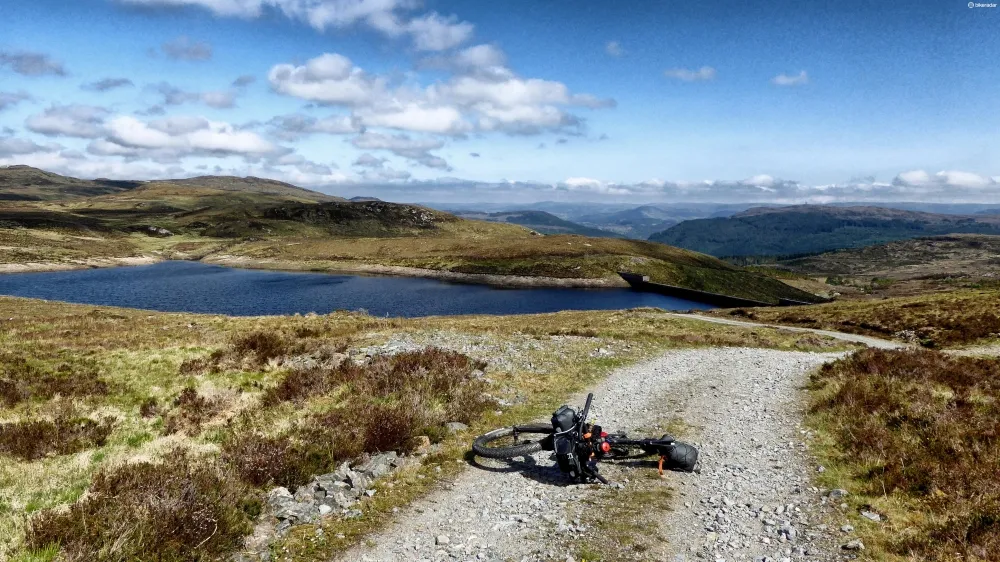
A swift descent into town for a full Scottish breakfast signals the start of day three, and the cycle of ride, eat, sleep, repeat resumes. Time begins to lose meaning as my day became an exercise in moving forwards. Everything else slips to the back of my mind as my world simplifies.
The sense of camaraderie runs deep, with the shared experience making instant friends of strangers
The heat doesn’t let up. If anything, today feels hotter than the previous days. I’m becoming accustomed to sitting under bridges to filter drinking water and hide out from the sun. More miles roll by under my wheels, but as evening draws in it’s clear that I’m behind schedule and floundering in the heat. As I set camp I scour the (digital) maps and look for the last extraction point before I pass the point of no return by entering the relative wilderness of the most northerly section of the route.
I don’t like to leave things unfinished, but continuing won’t be safe or enjoyable. The sun has wiped me out, my kit isn’t right for the conditions and a few small niggles are giving me concern. I’m not going to achieve my goal of completing the course within a modest seven or eight days so I decide to chalk it up to experience, take what I’ve learned from my mistakes and bad choices, and build on it for next time. I seek solace in the fact that it’s not uncommon for riders to scratch the 550 first time around but come back to conquer it the next year.
I plan for one more (easy) day’s riding and one final night out under canvas before heading to the railway station in Dingwall. With the pressure off, I can finally ride just for the joy of it and enjoy the beautiful landscape, and the idea of giving everything up and seeing the world from behind a Jones bar and a handlebar roll seems more and more appealing.
Sitting under a parasol in a cafe car park, with two tubs of ice cream in front of me, I call the organisers to announce my exit from the ride — still smiling and planning towards a more successful attempt next year.
Battle scars
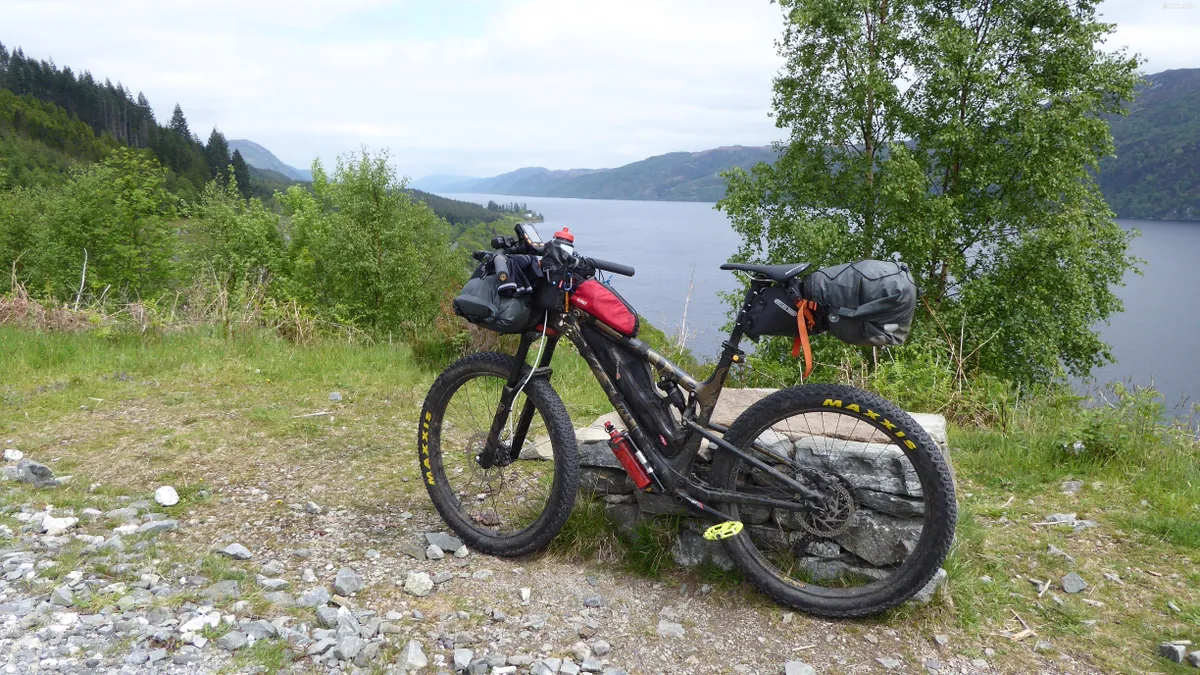
Back in Tyndrum, I join the early finishers as they wait for the rest of the riders to come home. I’d been expecting a close-run sprint for the finish, but instead, those in the lead group had spurred each other on for the final push and made an unspoken decision to cross the line together. In the local pub and Real Food Cafe, tales are told and experiences shared, midge bites treated and leg muscles massaged.
The sense of camaraderie runs deep, with the shared experience making friends of strangers. As more shattered riders return they’re reunited with people they crossed paths with along the way and their first questions are often about the progress of those still out on the trail.
I hear stories of attempted sleep in campsite laundry rooms while trying not to move and set off the automatic light sensors, and vomiting in front of a family at a pizza restaurant while trying to keep a proper meal down. A host of spills and near misses are recounted, along with details of field fixes required as components struggled to cope with the mileage, including a trailside hub rebuild.
Thinking about all I’ve learned, both in taking part and from those who’ve gone the distance, I’m determined to come back. My mind is already full of ideas for saving weight, because I now understand the most important rule of bikepacking — ‘don’t pack your fears’.
5 things I learned from the Highland 550
1. Not all batteries are born equal

Don’t even think about setting off with just Alkaline batteries. For power hungry or ‘high drain’ GPS devices only Lithium will do. You should be able to get 20-24 hours out of a GPS with lithium compared to around six hours with Alkaline.
They are also about a third of the weight which is great as you can save weight twice by packing fewer and they are lighter. They also continue to operate at sub-zero temperatures. They aren't easy to find though, so stock up online before you leave and plan how many you will need.
2. Don’t pack your fears
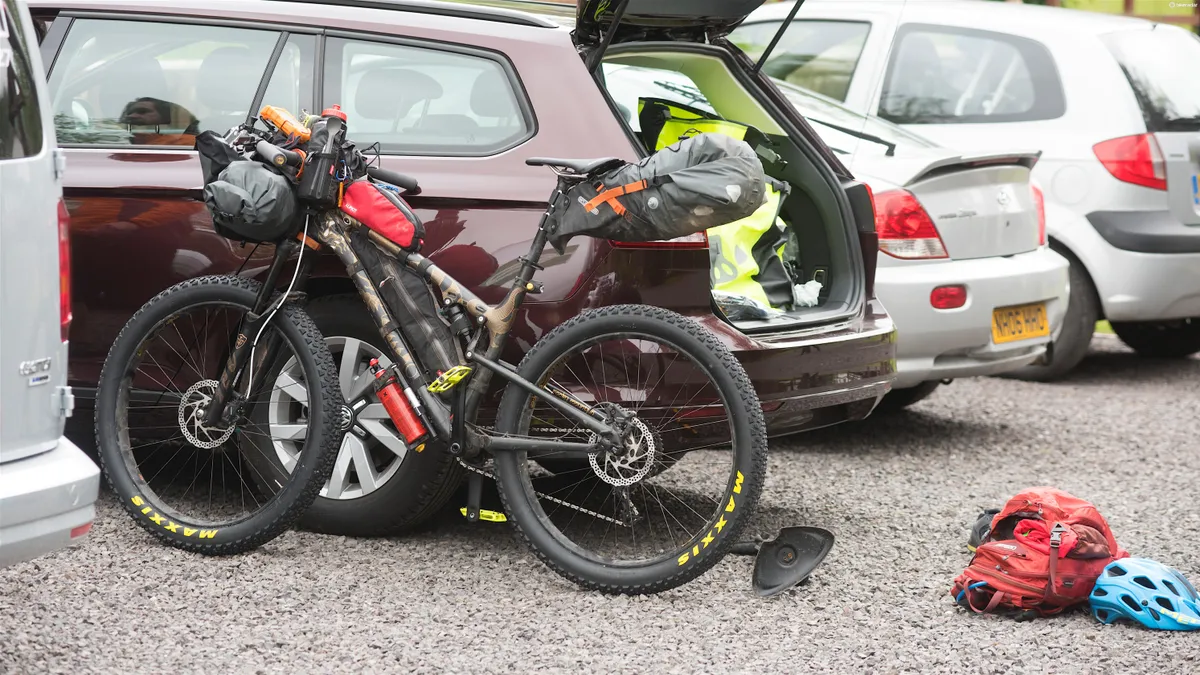
Do you really need an extra Primaloft jacket or a three season sleeping bag in the summer? If the weather forecast is clear, a full set of waterproofs is probably overkill and everything you pack is weight on the bike. When you return home make a pile of things you didn't need or use and keep them separate from your kit when you pack for your next adventure.
3. Foot love

Your feet are important… Long days in wet shoes is an invitation to get infections and worse. Take care of them at the end of every day's riding. Try to pack a little talc to help dry them out and think of carrying some anti-fungal cream such as Canesten to apply between the toes. At the very least keep a pair of dry wool socks in the bottom of your sleeping bag to put on every night. It will help them to dry and feels like a real treat.
4. The six Ps (proper planning prevents piss poor performance)

While this may seem like the most obvious point in practice it’s easy to underestimate the amount of planning and research you need to do. A more laid back ‘ride and see what happens’ approach is fine for short weekend trips, but for longer expeditions it is worth swatting up on any info you can find online — from race reports to blog write ups from previous riders.
Analyse relevant kit lists where possible and geek out on maps. Consideration should be made for suitable camping areas, shops for resupplying (including opening times) and any potential hazards, especially weather dependant ones.
5. Failing is the best way of learning

Never be afraid of failing. It is one of the best ways to learn. Understand what went wrong and find ways to improve things for next time. With so many elements that can go wrong including mechanical failure, injury, sickness and adverse weather to name a few, it is sometimes best to know when to call it a day.
It is better to pull out early while you are still smiling than to push on with unsolvable problems, especially if it is likely to put you at risk.

